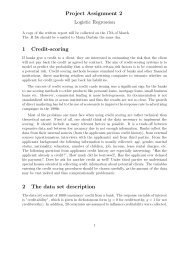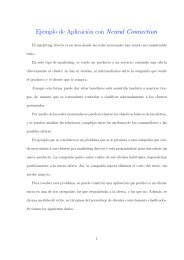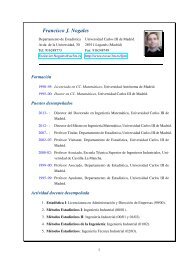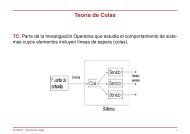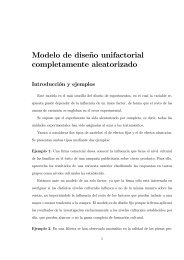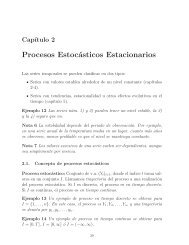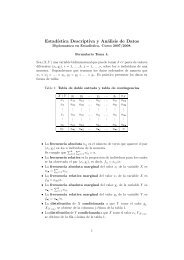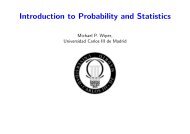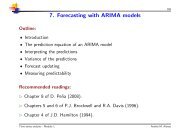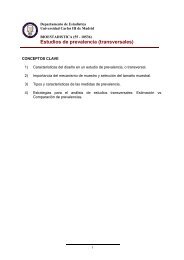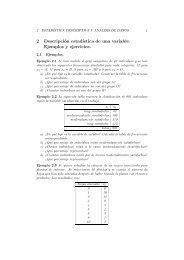Slides Chapter 1. Measure Theory and Probability
Slides Chapter 1. Measure Theory and Probability
Slides Chapter 1. Measure Theory and Probability
Create successful ePaper yourself
Turn your PDF publications into a flip-book with our unique Google optimized e-Paper software.
<strong>1.</strong>4. PROBABILITY MEASURES<br />
defined on an algebra A, then for all A 1 ,...,A n ∈ A,<br />
( n<br />
)<br />
⋃ n∑<br />
µ A i ≤ µ(A i ).<br />
i=1<br />
5. Prove that for any measure µ defined on an algebra A, then<br />
for all A 1 ,...,A n ∈ A such that ⋃ ∞<br />
n=1 A n ∈ A,<br />
( ∞<br />
)<br />
⋃ ∞∑<br />
µ A n ≤ µ(A n ).<br />
n=1<br />
<strong>1.</strong>4 <strong>Probability</strong> measures<br />
i=1<br />
n=1<br />
Definition <strong>1.</strong>19 (R<strong>and</strong>om experiment)<br />
A r<strong>and</strong>om experiment is a process for which:<br />
• the set of possible results is known;<br />
• its result cannot be predicted without error;<br />
• if we repeat it in identical conditions, the result can be different.<br />
Definition <strong>1.</strong>20 (Elementary event, sample space, event)<br />
The possible results of the r<strong>and</strong>om experiment that are indivisible<br />
are called elementary events. The set of elementary events is<br />
known as sample space, <strong>and</strong> it will be denoted Ω. An event A is a<br />
subset of Ω, such that once the r<strong>and</strong>om experiment is carried out,<br />
we can say that A “has occurred” if the result of the experiment<br />
is contained in A.<br />
Example <strong>1.</strong>8 Examples of r<strong>and</strong>om experiments are:<br />
(a) Tossing a coin. The sample space is Ω = {“head”,“tail”}.<br />
Events are: ∅, {“head”}, {“tail”}, Ω.<br />
ISABEL MOLINA 12



